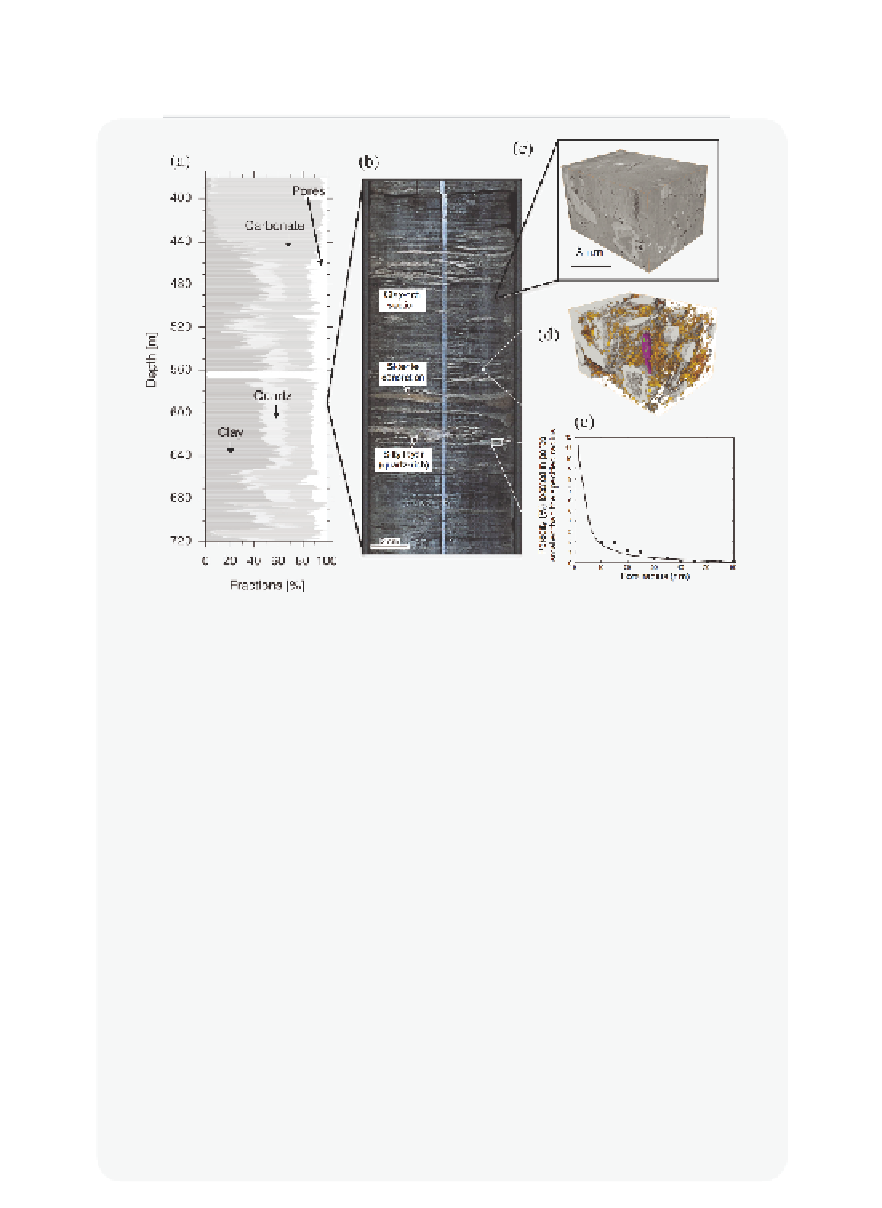Environmental Engineering Reference
In-Depth Information
Figure 10.2.11
Microstructure of Opalinus clayshale
The Opalinus clay formation has been extensively studied as a potential host formation
for a Swiss high-level radioactive waste repository. (a) On length scales of tens of
meters, the average mineralogy of the shale is relatively homogeneous (
∼
60% clay min-
erals, 20% quartz, 20% carbonates). (b) On length scales of centimeters, the mineralogy
is heterogeneous, with alternating clay-rich beds, silt lenses, and carbonate concre-
tions. (c) On length scales of micrometers, focused ion beam scanning electron micros-
copy images show that the non-clay grains (quartz, carbonates, organics) are distributed
in the clay matrix. Figure (d) shows a reconstruction of the mineralogy of the sample
shown in (c), where gray regions are quartz or carbonate grains, the purple region is
organic matter, yellow regions are pores larger than 10 nm (detected by SEM), and the
transparent region is the nanoporous clay matrix. Figure (e) shows the cumulative pore-
size distribution of the sample shown in (c): the data points (circles) are from the pore
space probed by FIB-SEM; the measured porosity is 2%, but the technique cannot
detect pores smaller than 10 nm. The line shows the pore space probed by N
2
adsorp-
tion (the measured porosity is 11%, but the technique cannot probe pores narrower
than about 2nm). The total water-accessible porosity of Opalinus clay is between 12
and 16% (this includes pores located within clay grains, such as smectite interlayer
nanopores shown in
Figure 9.2.3
). (a):
Reproduced from Wenk et al
. [10.20], 2009,
Figure 2,
with kind permission of The Clay Minerals Society, publisher of Clays and Clay
Minerals.
(b):
Reproduced from Marschall et al.
[10.21],
with permission from Revue IFP
.
(c) and (d):
Reproduced from Keller et al.
[10.22],
with permission from Elsevier
. (e):
Reproduced from Keller et al
. [10.23],
with permission from Pergamon
.












Search WWH ::

Custom Search